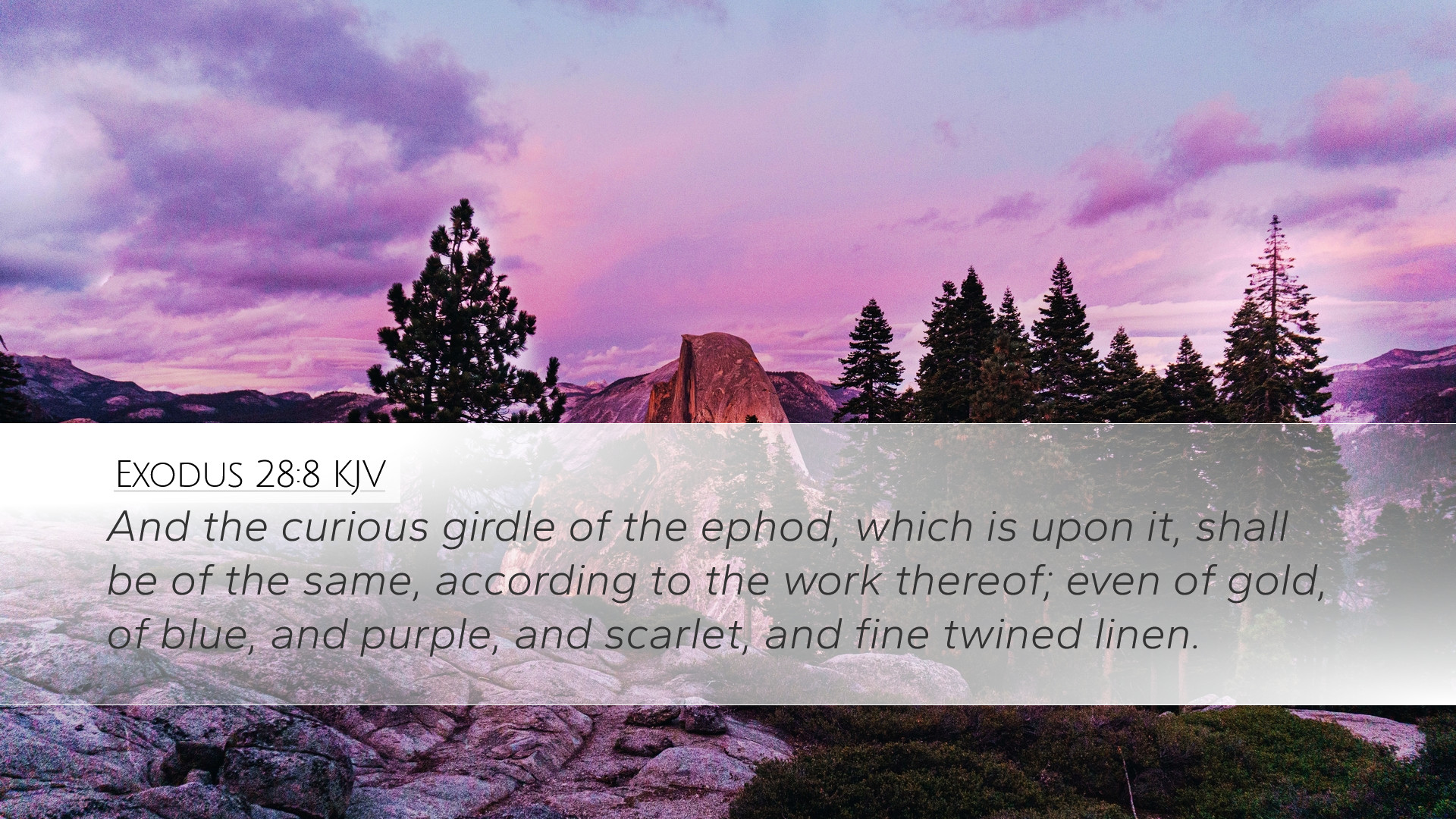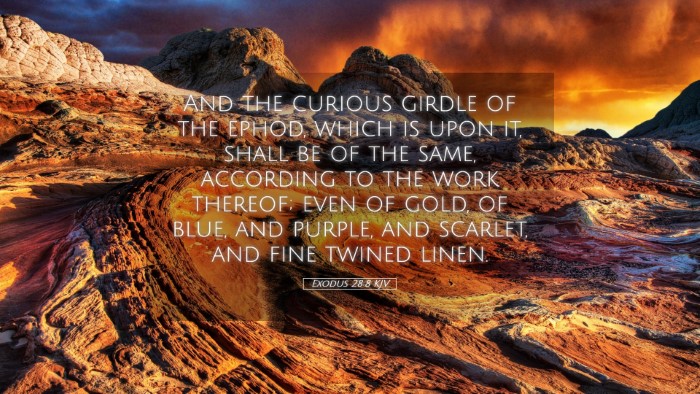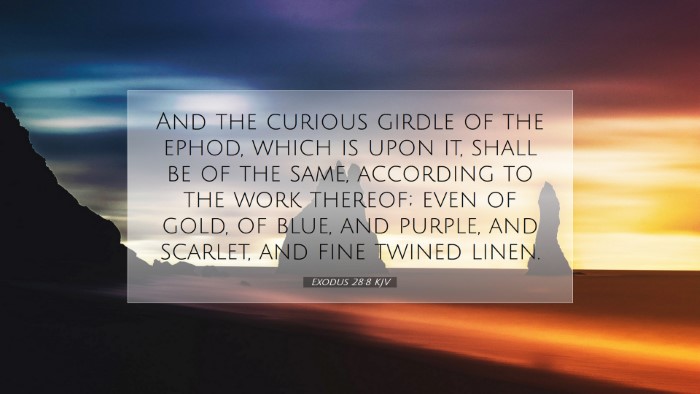Exodus 28:8 - Commentary and Insights
Verse Text: "And the curious girdle of the ephod, which is upon it, shall be of the same, according to the work thereof; even of gold, of blue, and purple, and scarlet, and fine twined linen."
Introduction
This verse is part of the divine instructions given to Moses regarding the vestments of the high priest, Aaron, as found in Exodus 28. The ephod and its girdle hold significant symbolic meaning, representing both the glory of God and the priestly office. The careful craftsmanship of these garments underscores the reverence required in approaching the holiness of God.
Commentary Summary
1. Symbolism of the Ephod
The ephod is a critical garment worn by the high priest, symbolizing his role as the mediator between God and the people of Israel. Matthew Henry notes that the ephod serves to highlight the dignity and honor associated with the priestly office, emphasizing that this role is not taken lightly.
2. Materials Used
- Gold: Represents the glory and divine nature of God. It signifies purity and value, pointing to the greatness of God’s being.
- Colors (blue, purple, scarlet): Each color used in the girdle carries deep theological significance. Blue often symbolizes heaven and divine nature, purple signifies royalty, and scarlet points to sacrifice and atonement.
- Fine Twined Linen: A symbol of righteousness and holiness. It emphasizes the purity required of those who serve in the presence of God.
3. The Girdle’s Function
The girdle of the ephod is not merely decorative; it serves a functional purpose in securing the garments of the priest. Adam Clarke elaborates on how the girdle represents strength and readiness, ensuring that the high priest is prepared for the service of the Lord. This aspect serves as a reminder for ministers of the Gospel to be equipped and prepared for their calling.
4. Curiosity in Craftsmanship
The term "curious" indicates a careful and skillful design. Albert Barnes highlights that such intricate work was commanded by God, setting a standard for beauty and precision in worship. This reflects God’s desire for excellence in worship, calling His people to give their best.
Theological Implications
1. Holiness and Worship
The elaborate and opulent design of the high priest's garments serves as a reminder of God’s holiness. As the high priest approaches God on behalf of the people, it underscores the reverence required in approaching God. Worship involves not just the act but the preparation and mindset behind it.
2. Christ as Our High Priest
Theologians draw parallels between the ancient priesthood and Christ’s fulfillment of this role. Jesus, as our high priest, embodies the ultimate righteousness and purity that the garments symbolize. His sacrifice and the shedding of His blood fulfill the role of atonement, making the elaborate garments of the Old Covenant a precursor to the reality found in the New Covenant.
3. Call to Service
Exodus 28:8 calls those who serve in ministry to recognize the weight of their calling. The girdle signifies service and dedication, encouraging pastors and theologians to commit themselves fully to their God-given responsibilities, believing that their work is not only for the people but ultimately for God. This is crucial for effective ministry and genuine worship.
Practical Applications
- Excellence in Worship: Believers are encouraged to bring their best to God, contributing to worship with sincerity and skill.
- Preparation for Service: Just as the high priest prepared himself with the garments, those in ministry are called to prepare their hearts and lives for service.
- Understanding Our Role: Recognizing our standing as a royal priesthood (1 Peter 2:9), we are encouraged to embrace our calling to reflect God’s glory in our lives and communities.
Conclusion
Exodus 28:8 offers rich insights into the nature of worship, the holiness of God, and the calling of His servants. The careful crafting of the ephod and its girdle not only reveals the beauty of worship but also challenges believers to pursue holiness and excellence in all things related to God. It reminds us that we are all part of a greater narrative of redemption, represented ultimately in the person of Jesus Christ, our High Priest.


